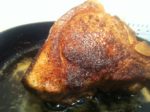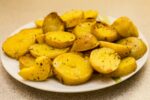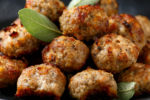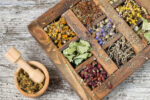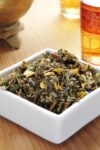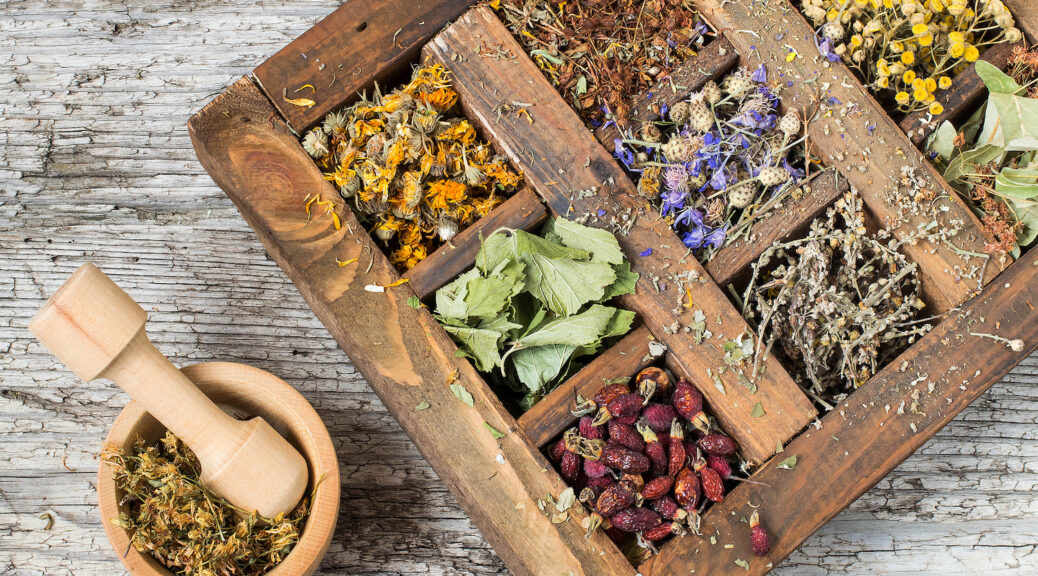
Medicinal, Herbaceous, and Other Drinks for Invalids, etc.
Cookbooks published in the 1800s often contained household hints and medical advice. Of course, this advice is from over 200 years ago! I discovered a comprehensive online document called “Glossary of Medical Terms Used in the 18th and 19th Centuries“ to help me identify some of the diseases mentioned below.
In the 1960s, our mother used to dose us with Father John’s Cough Syrup when we were young. It was made of cod liver oil. I remember it being thick and light brown in color. It tasted awful, so when we had to cough, we ran outside so our mother wouldn’t hear us. Father John’s is still sold today but the active ingredient is now dextromethorphan hydrobromide.
INFORMATION BELOW COMPILED FROM 1800s COOKBOOKS
BRAN TEA: A REMEDY FOR COLDS, ETC.
Boil a large handful of bran in a quart of water for ten minutes, then strain off the water into a jug. Sweeten it with one ounce of gum arabic* and a good spoonful of honey. Stir all well together, and give this kind of drink in all cases of affections of the chest, such as colds, catarrhs,* consumption,* etc., and also for the measles.
*gum arabic – a natural gum consisting of the hardened sap the acacia tree. It is edible and used primarily in the food industry as a stabilizer.
*catarrhs – an inflammation of a mucous membranes of the head and throat, with a flow of mucous.
*consumption – a wasting away of the body; formerly applied especially to pulmonary tuberculosis, caused by the bacterium Mycobacterium tuberculosis.
HOW TO MAKE A SOOTHING DRINK FOR COUGHS
Take one ounce each of marshmallow roots and licorice roots, and one-half ounce of linseed. Shave the roots very thinly. Put them and the linseed into a clean earthen pot with one quart of hot water. Cover with the lid and set the whole on the hob* of the fire to simmer for half an hour or more. Then strain the drink into a clean jug, sweeten with honey, and when it has become quite cold, let it be given in small quantities several times in the course of the day. This mucilaginous beverage is most beneficial in relieving persons who are suffering from cold on the chest, and also those who are afflicted with gravel,* etc.
*hob – a flat metal shelf at the side or back of a fireplace used especially for heating pans. Also, a cooking appliance, or the flat top part of a stove, with hotplates or burners.
*gravel: a disease characterized by small stones which are formed in the kidneys, passed along the ureters to the bladder, and expelled with the urine.
LINSEED TEA
Put a tablespoon of linseed into a clean earthen pot or pipkin* with a quart of water, and a little orange or lemon rind. Boil this gently for about ten minutes, then strain it through muslin into a jug. Sweeten with honey or sugar, add the juice of a lemon, stir all together, and give this beverage to allay irritation of the chest and lungs—in the latter case, the lemon juice had better be omitted. Linseed tea in its purest form is an excellent accessory in aiding to relieve such as are afflicted with gout, gravel, etc.
*pipkin – a small earthenware pot or pan.
CAMOMILE TEA
Put about thirty flowers into a jug, pour a pint of boiling water upon them, cover up the tea, and when it has stood about ten minutes, pour it off from the flowers into another jug. Sweeten with sugar or honey and drink a teacup* of it fasting in the morning to strengthen the digestive organs, and restore the liver to healthier action. A teacup of camomile tea, in which is stirred a large dessertspoon* of moist sugar, and a little grated ginger, is an excellent thing to administer to aged people a couple of hours before their dinner.
*teacup – same as a jill or gill; four ounces (1/2 cup) in the U.S. and five ounces in the U.K.
*dessertspoon – two teaspoons.
HOW TO MAKE A CORDIAL FOR COLDS.
First, prepare a quart of the juice of black currants by bruising and boiling them for twenty minutes, then straining off the juice with great pressure through a sieve into a basin. Next, boil four ounces of linseed in a quart of water until reduced to one-third of its original quantity, taking care that it does not boil fast. When done, strain the liquid into a very clean saucepan. Add the currant juice, two pounds of moist sugar, and one-half ounce of citric acid, or one pint of lemon juice.
Boil all together until reduced to a thick syrup—when it begins to run rather thick from the spoon without resembling treacle.* As soon as the syrup has reached this stage, remove it from the fire, and pour it into a jug to become quite cold. This syrup will keep good for any length of time if bottled and corked down tight, and kept in a cool place. A teaspoon taken occasionally will soon relieve the most troublesome cough.
This cordial may also be prepared in winter, using for the purpose black currant jam, or preserved black currant juice, instead of the juice of fresh-gathered currants.
*treacle – molasses.
A CURE FOR A HARD DRY COUGH
Take of each one tablespoon—spermaceti* grated, honey, and peppermint water. Mix all together with the yolks of two eggs in a gallipot.* A teaspoon should be taken on the tongue and allowed to be swallowed slowly as it dissolves.
*spermaceti – a white waxy substance produced by the sperm whale, formerly used in candles and ointments.
*gallipot – a small pot made from glazed earthenware or metal.
HYSSOP TEA: A REMEDY FOR WORMS
To one-fourth ounce of dried hyssop flowers, pour one pint of boiling water. Allow the tea to infuse for ten minutes. Pour it off, sweeten with honey, and drink a wineglass* full three times in the course of the day. This will prove an effectual cure when children are troubled with worms.
*wineglass – one-fourth cup.
ICELAND MOSS JELLY
Boil four ounces of Iceland moss* in one quart of water very slowly for one hour. Then add the juice of two lemons and a bit of rind, four ounces of sugar, and a gill* of sherry. Boil up, and remove the scum from the surface. Strain the jelly through a muslin bag into a basin and set it aside to become cold. It may be eaten cold, but it is far more efficacious in its beneficial results when taken warm. The use of Iceland moss jelly is strongly recommended in cases of consumption, and in the treatment of severe colds, catarrhs, and all phlegmatic diseases of the chest.
*Iceland moss – an arctic-Alpine lichen that grows abundantly in mountainous regions of northern countries, and especially in the west and north of Iceland. Lichens are made of algae and fungus growing together.
*gill or jill – a liquid measurement; four ounces (1/2 cup) in the U.S. and five ounces in the U.K.
A REFRESHING DRINK FOR SORE THROAT ATTENDED WITH FEVER
Boil two ounces of barberries with half an ounce of violets in a quart of water for ten minutes. Sweeten with honey, strain off into a jug, and drink several glasses during the day.
=================================================
Do You Know of Any Old Time Home Remedies? Please Leave a Comment Below.
================================================
